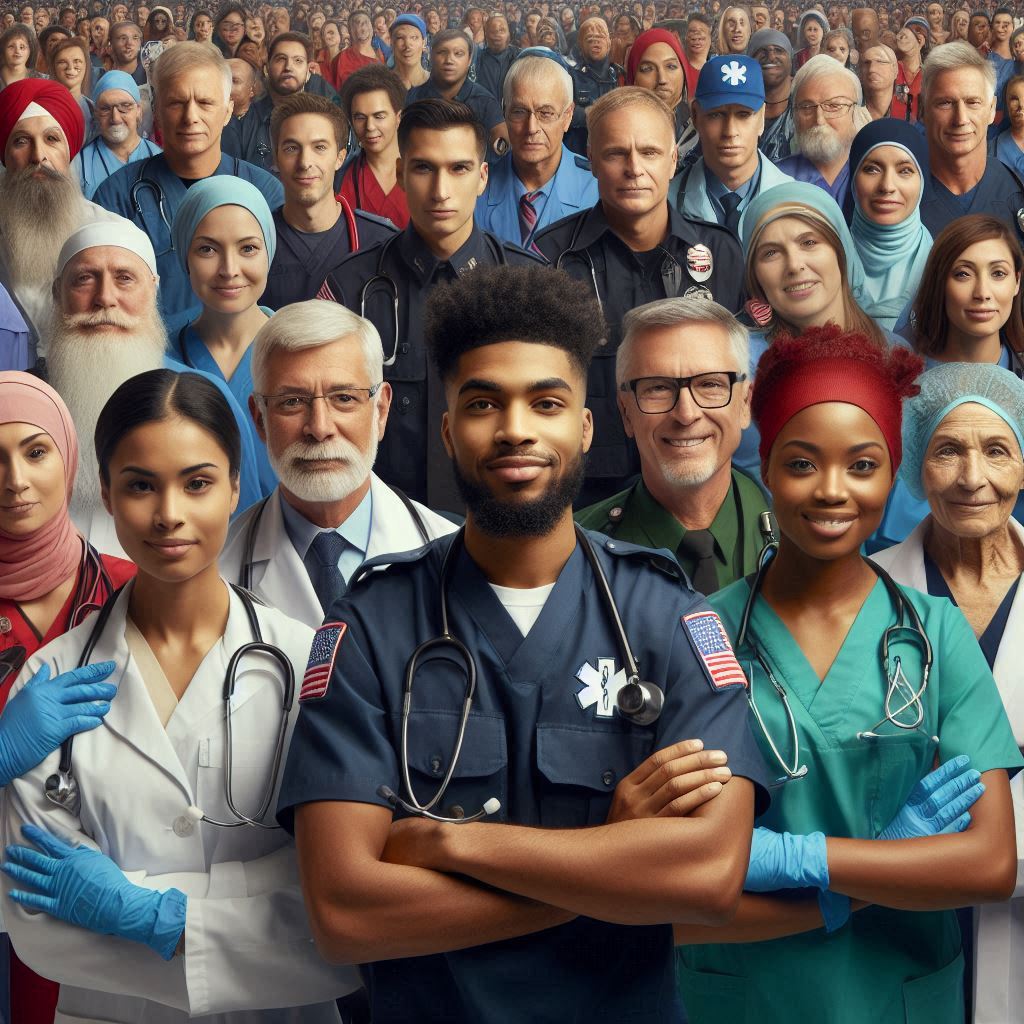
Imagine you’re responding to a 911 call. Upon arrival, you find a family whose primary language isn’t English. The patient might be in severe pain, but neither they nor their family can communicate effectively. Stressful, right? This scenario isn’t rare. Cultural competence in EMS is the ability to understand, respect, and work effectively with patients from diverse backgrounds. It means recognizing the unique needs rooted in different cultures, languages, and beliefs. Why is this important? Because it facilitates equitable patient care, ensuring everyone gets the right treatment, irrespective of their background.
Breaking Down Language Barriers in Emergency Response
Language barriers can be one of the most immediate challenges in an emergency response. When seconds count, clear communication is key. But what do you do when you don’t share a common language with the patient?
Tip #1: Leverage Technology
There are translation apps and services designed for medical emergencies. These tools can help bridge the gap quickly, ensuring you understand the patient’s condition and they grasp your instructions. However, it’s important to get familiar with these apps before you’re in the hot seat.
Tip #2: Learn Basic Medical Phrases
A few phrases can go a long way. Even knowing how to ask about pain, allergies, or specific symptoms in multiple languages can make a huge difference.
Tip #3: Use Visual Aids
Keep illustrated aids or cards in your emergency kit. These can help patients communicate where they feel pain, what symptoms they have, or any other crucial details.
Addressing Religious Considerations in Emergency Care
Religion can significantly influence a patient’s medical decisions. What one patient views as life-saving, another might find unacceptable due to their beliefs. In emergency care, where decisions often need to be made swiftly, it’s essential to have a basic understanding of how different religious beliefs might impact medical choices.
Without needing to be an expert on every religion, having basic awareness can go a long way. For instance, knowing that Jehovah’s Witnesses often refuse blood transfusions can be crucial in emergency decision-making. Similarly, some Muslim patients may have specific modesty requirements, and certain Buddhist patients might prefer to avoid medications that affect their mental clarity. Being aware of such fundamental beliefs can help healthcare providers anticipate and navigate potential conflicts.
Always strive to respect religious convictions. If a particular treatment conflicts with the patient’s beliefs, explore alternative options. This might involve consulting with medical colleagues to find acceptable substitutes or utilizing advanced technologies that align better with the patient’s religious constraints. For example, for a Jehovah’s Witness patient, using blood substitutes or non-blood volume expanders can be considered. Engaging with the patient and their family to understand their needs and constraints more deeply is also crucial.
Communicating with family members or religious leaders can provide guidance. These individuals can offer insights into the patient’s preferences and help mediate decisions that align with their faith. Involving them in the decision-making process can also help alleviate the patient’s and family’s anxiety, ensuring that the care provided feels respectful and considerate of their beliefs.
Approach every situation without preconceived notions. Avoid assuming what a patient might or might not be comfortable with based solely on their religious affiliation. Each patient is an individual with unique interpretations and practices. A mindset of genuine curiosity and respect can help build trust and facilitate better care. Asking open-ended questions about the patient’s needs and concerns can reveal important information that might not be immediately apparent.
Navigating Cultural Beliefs in Healthcare
Then there are cultural beliefs, sometimes deeply ingrained, influencing how people view health, illness, and medical treatment. Different cultures have varied interpretations of what constitutes effective care or preferred treatment methods.
Instead of assuming, ask questions that allow patients to share their beliefs and preferences. Questions like, “Is there anything important I should know about your health practices?” can open the door to valuable information.
Many communities have liaisons or advocates who specialize in bridging the cultural gap. Engaging these individuals can provide insights and facilitate better patient care.
Cultural competence isn’t a one-and-done deal. It involves ongoing learning and adapting to new cultural norms and practices as our communities evolve. Regular training and education can keep you well-prepared.
Practical Steps for Developing Cultural Competence
Alright, so you get why it’s important, but how do you actually become more culturally competent? Here’s a quick checklist to get started:
- Commit to Learning: make it a point to learn about different cultures, languages, and religious practices, especially those common in your community.
- Build Relationships: foster connections with cultural communities in your service area. Attend events, engage with community leaders, and show genuine interest.
- Seek Feedback: actively ask patients and colleagues for feedback on your cultural competence. Be open to constructive criticism and use it to improve.
- Stay Updated: cultures and norms can change. Stay informed by reading, attending workshops, and participating in related training sessions.
A Real-Life Example
To put theory into context, let’s look at a real scenario. A few years back, EMS units in a diverse city faced high call volumes from a community with a large immigrant population. Many responders struggled with language barriers and cultural misunderstandings, leading to delays and sometimes even mistrust.
To address this, the EMS department introduced cultural competence training. They also equipped units with language translation devices and cultural guides relevant to the local population. The result? Response times improved, patient satisfaction increased, and trust was rebuilt between the community and EMS providers.
